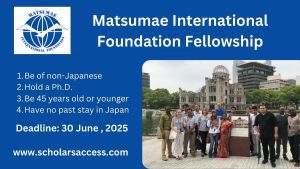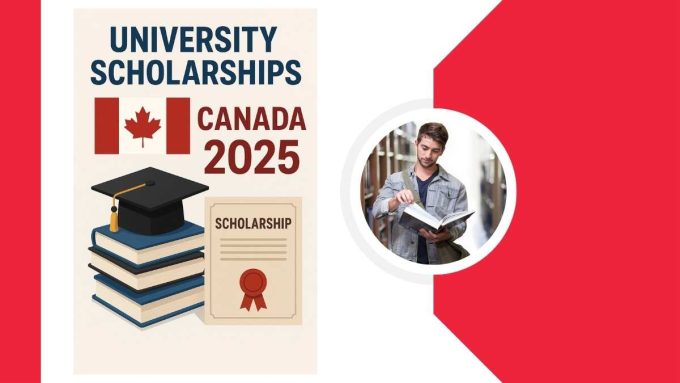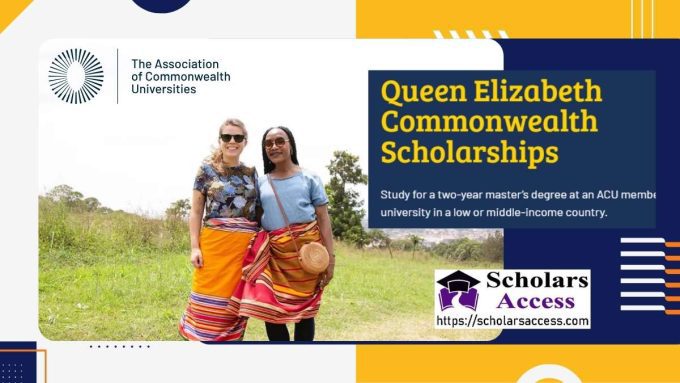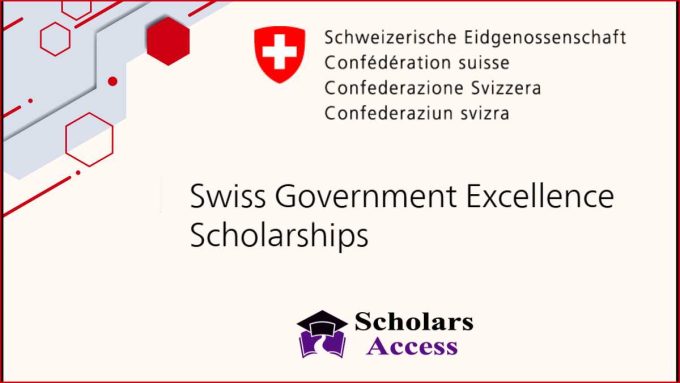Quick Facts: MEXT Scholarship in Japan 2026
| Feature | Details |
|---|---|
| Scholarship Name | MEXT Scholarship in Japan 2026 |
| Funded by | Ministry of Education, Culture, Sports, Science, and Technology (Japan) |
| Course Level | Master’s, Doctoral, Non-degree Research |
| Fields of Study | Wide range including STEM, Humanities, Social Sciences, etc. |
| Benefits | Tuition, monthly stipend, airfare, and health insurance |
| Application Route | Embassy recommendation (mostly) |
| Deadline | May–June 2025 (varies by country), Please follow the official Website |
| Language Requirement | Varies; Japanese/English-taught courses available |
| Age Limit | Under 35 years (research and postgraduate) |
| Duration | 2-3 years (plus 6 months language training if needed) |
The MEXT Scholarship in Japan 2026 is a golden chance for students worldwide to study at top universities in Japan without worrying about tuition fees or living costs. Offered by the Japanese Ministry of Education, Culture, Sports, Science, and Technology (MEXT), this scholarship opens doors to life-changing academic and cultural experiences.
If you’ve ever dreamed of walking under cherry blossoms on your way to class or learning from world-class professors in cutting-edge labs, this opportunity is designed for you. Whether aiming for a master’s degree or conducting advanced research, this scholarship gives you a head start.
Host Country: Japan
Japan is not just a tech giant or anime hub—it’s a country rich in tradition, discipline, and innovation. Students studying here experience a unique mix of old-world charm and modern brilliance. Cities are clean and safe, public transport is efficient, and people take pride in their work and education.
International students often find Japanese society welcoming, respectful, and well-organized. The lifestyle might differ from what you’re used to, but many find it deeply rewarding.
MEXT Scholarship in Japan University List
The MEXT Scholarship Japan allows students to apply to numerous prestigious universities nationwide. You can choose institutions based on your academic goals and field of interest.
Here are some top choices:
- University of Tokyo
- Kyoto University
- Osaka University
- Tohoku University
- Kyushu University
- Nagoya University
- Tokyo Institute of Technology
This list isn’t limited to the big names—many national and private universities also participate. Always check each university’s guidelines, as they might differ slightly in handling MEXT students.
Key Benefits of the MEXT Scholarship in Japan
What makes the MEXT Scholarship for Master’s and Research so attractive?
- Full Tuition Waiver: No tuition fees at all.
- Monthly Stipend: ¥144,000 for master’s, ¥145,000 for doctoral programs (approximate and subject to slight changes).
- Round-trip Airfare: MEXT covers economy-class flights from your home country to Japan after graduation.
- No Application Fee: You don’t pay to apply.
- Japanese Language Training: Non-Japanese speakers get 6 months of language preparation before their course begins.
It’s more than financial aid—it’s peace of mind.
Eligibility Criteria for MEXT Scholarship in Japan 2026
Before jumping into applications, let’s break down the basic eligibility needs. Each year, these are reviewed, so check the latest guidelines from the Japanese embassy in your country. Still, here’s what’s commonly expected:
Academic Qualifications
- You must have completed or expect to complete a bachelor’s degree for master’s, or a master’s for doctoral-level study.
Nationality
- You must be a citizen of a country with diplomatic ties to Japan.
Health
- You must be physically and mentally fit to study in Japan.
Language Requirements
- Not all programs require Japanese language skills, especially if you’re applying to an English-medium course. However, a willingness to learn the language is seen as positive.
MEXT Scholarship Age Limit
For the MEXT Scholarship in Japan 2026, you should typically be under 35 by April 1, 2026, if applying for a research or master’s course. Always confirm with the embassy, as slight exceptions or changes can occur.
This age limit reflects Japan’s effort to invest in young minds who can contribute meaningfully after their studies.
Course Level and Fields of Study
Course Level
The MEXT Scholarship in Japan 2026 supports:
- Master’s degrees (usually 2 years)
- Doctoral (PhD) degrees (typically 3 years)
- Non-degree research (for up to 2 years, in specific cases)
Fields of Study
MEXT welcomes applications in nearly all academic areas:
- Engineering
- Science and Technology
- Social Sciences
- Humanities
- Medical Sciences
- Agriculture
- Arts and Design
Applicants must choose a research topic that aligns with their past academic background or professional experience.
Course Duration and Study Time
The general duration depends on your degree level:
- Master’s Degree: 2 years
- PhD Degree: 3 years
- Language Training (if needed): 6 months before the academic course starts
You’ll spend your first few weeks getting settled, attending orientation, and perhaps learning basic Japanese if it’s not already part of your background.
Full-time study is expected, meaning you should focus entirely on your research or coursework during this period.
MEXT Scholarship in Japan 2026 Deadline
The MEXT Scholarship 2026 deadline can vary depending on your country. Most embassies open their calls between April and May 2025, with deadlines around May or June 2025.
It’s crucial to visit your Japanese embassy’s website regularly and follow its updates as well as this website. Embassy deadlines are strict—missing one means waiting an entire year.
MEXT Scholarship in Japan Course Guide: Step-by-Step
- Research – Find eligible programs and universities that align with your goals.
- Embassy Recommendation—Most applicants go through the embassy recommendation route. This involves submitting documents, appearing for interviews, and possibly taking written tests.
- Document Submission – Required documents usually include:
- Application form
- Research plan or study proposal
- Academic transcripts
- Degree certificates
- Letters of recommendation
- Health certificate
- University Placement – After clearing the embassy stage, you’ll be recommended to universities for placement.
- Final Selection by MEXT – Once a university agrees to accept you, MEXT approves.
Every step needs care and clarity. Your research proposal, in particular, should be well-structured and match your past education.
First Screening, Provisional Acceptance & Final Selection
The MEXT Scholarship in Japan 2026 has a structured selection process. If you’re applying through the Embassy Recommendation, there are three critical phases you need to understand: First Screening, Requesting Provisional Acceptance, and the Second Screening with University Placement. Let’s walk through each stage in a clear and simplified way.
1. First Screening
The Japanese Embassy or Consulate in your country handles the First Screening. This includes:
- Document Review
- Language Tests (English & Japanese)
- Interview
Language Exams:
Both Japanese and English language tests are mandatory. If you’re from a country where English is the official language, you might not need to take the English test. The Japanese test result helps assess whether you’ll need preparatory Japanese education later.
Evaluation Criteria:
- Documents: Your academic background should be strong, and your research plan must be well-explained.
- Language Proficiency: You should be able to handle academic work in either Japanese or English.
- Interview: You must show clear goals for studying in Japan, be aware of Japanese universities, and be able to communicate with your future supervisor.
Results Announcement:
Each Japanese embassy sets its result date. Remember that passing this stage does not mean you are officially selected as a MEXT scholar. It only qualifies you for the next steps.
2. Requesting a Letter of Provisional Acceptance
After passing the First Screening, the next big step is to contact universities in Japan and request a letter of provisional acceptance. This letter is key to your final selection.
Important Guidelines:
- Contact universities by Monday, September 1, 2025 (Japan time)
- Do not contact universities after Tuesday, September 2, 2025
You can:
- Apply to up to 3 universities on your Placement Preference Form.
- Obtain a maximum of 2 letters.
- Contact only two universities at a time.
- If one rejects you, you can contact another.
Note: If a university rejects your request, you cannot ask another professor in that same university. You also can’t argue or appeal their decision.
Who to Contact:
Contact the university’s International Student Affairs Division, not directly to a professor. The Japanese embassy can provide you with contacts and helpful university websites.
Documents to Submit to Universities:
You need to email the following:
- Passing Certificate from the embassy
- Stamped copies of these documents:
- Application form
- Field of Study & Research Plan
- Academic transcripts
- Graduation certificate
- Letter of recommendation
- Medical certificate
- Abstracts of theses (if applicable)
- Language proficiency certificate (if submitted)
- Employer recommendation (if submitted)
- Photos or media (for arts/music applicants, if applicable)
These documents must be stamped and clear. A university can’t issue a letter if it doesn’t receive your Passing Certificate.
Final Step:
Once you get university responses, submit the Placement Preference Application Form to your embassy. Only include universities that accepted you. Also, confirm your intended arrival term (April or October) with the university—this can’t be changed later.
Use MEXT’s official forms only. If a university sends a letter in the wrong format, ask them to resend it using the MEXT template.
3. Second Screening and Final Placement
MEXT does the Second Screening based on your First Screening results and your university placement status.
Important: Applications can be rejected if they relate to concerns about weapons development or research misuse.
University Placement:
- If you have a valid provisional acceptance letter, MEXT will try to place you at that university.
- If you list national and private universities, your preference might not be thoroughly followed. National universities are prioritized for funding reasons.
If you got accepted as a regular student, you’ll directly start your course.
You’ll join a six-month language preparatory course if your Japanese language level isn’t strong enough for full-time classes or research. After completing it, you’ll enter the university for your main program.
If your Japanese is strong, you may skip this step and start directly.
Notification of Final Results
- Final results and university placements will be announced between January and March 2026.
- Your local embassy will notify you.
- The final decision is not appealable, and no reasons will be provided if you are not selected.
Even if you didn’t get a letter of provisional acceptance, you may still submit your placement form. However, you’ll only be eligible for the October intake.
Summary Checklist
| Stage | Key Actions |
|---|---|
| First Screening | Embassy screens documents, interviews, and conducts language tests |
| Provisional Acceptance | Contact universities and get up to 2 letters before Sep 1, 2025 |
| Final Form Submission | Submit the Placement Preference Form based on acceptance letters |
| Second Screening | MEXT reviews and places you in a university |
| Final Result | Announced by the embassy (Jan–Mar 2026) |
Living in Japan as a MEXT Scholar
Life in Japan may initially feel unfamiliar, but many international students adapt quickly. Clean dormitories, punctual transportation, and friendly classmates are just part of the experience.
Meals are affordable, especially if you enjoy rice and noodles. Healthcare is excellent, and student insurance keeps costs low. Weekend trips to explore temples or mountains become the norm.
You’re not just studying—you’re growing.
Personal Tips from Former Scholars
Many past recipients of the MEXT Scholarship in Japan share similar lessons:
- Start early: Preparing documents takes longer than expected.
- Polish your research plan: A strong proposal makes a real difference.
- Stay connected: Join online forums or Facebook groups for advice.
- Respect deadlines: Late or incomplete applications aren’t accepted.
- Keep learning Japanese: Even basic skills will make daily life easier.
You’re building a future academically and as a global citizen.
(Follow us on Facebook, Twitter, Instagram, Pinterest and Threads page)













Leave a comment